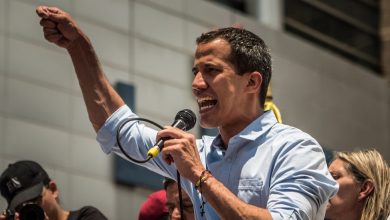Does Social Media Perpetuate Inequality?

For some people, social media is inconsequential — a cat photo here, a banana slip TikTok there. For others, it’s all-consuming — a helpless catapult into a slurry of anxiety, self-harm and depression.
To each his own internet.
Still, we can make some generalizations about the impact. We know social media use can harm mental health. We know that this disproportionately affects young people. Both the surgeon general and the American Psychological Association put out related health advisories this year. And we know that girls, who use social media more than boys, are disproportionately affected.
But social media use also differs by race and ethnicity — and there’s far less discussion of that. According to a new study by Pew, Black and Hispanic teenagers between the ages of 13 and 17 spend far more time on most social media apps than their white peers. One in three Hispanic teens, for example, say they are “almost constantly” on TikTok, compared with one in five Black teenagers and one in 10 white teenager. Higher percentages of Hispanic (27 percent) and Black teenagers (23 percent) are almost constantly on YouTube compared with white teenagers (9 percent); the same trend is true for Instagram.
Overall, 55 percent of Hispanic teenagers and 54 percent of Black teenagers say they are online almost constantly, compared with 38 percent of white teenagers; Black and Hispanic kids between ages 8 and 12, another study found, also use social media more than their white counterparts.
What we don’t fully understand yet is why.
But it’s important to discern the reasons behind these differences and explore the implications, especially given that earlier research on social media use, according to some researchers, focused almost exclusively on white teenagers.
“For these kids to be stuck to a computer is concerning,” Amanda Calhoun, a clinical fellow at the Yale Child Study Center who studies race and digital media, told me.
“But we also have to ask,” she went on, “why they are so drawn to social media? Is it the messages on social media that’s exacerbating the depression and anxiety, or was the depression and anxiety already there to begin with and social media is a way to self-medicate?”
Black and Latino kids use social media differently from white kids, Linda Charmaraman, director of the Youth, Media and Wellbeing Research Lab at Wellesley Centers for Women, told me. “It’s culturally more acceptable in youth of color households to use technology for social and academic reasons compared with white households,” Charmaraman said. “Parents don’t worry as much about it. There isn’t as much shame around it.”
WhatsApp, hugely popular in Latin America, is used by Hispanic teenagers more than by other demographic groups of the same ages. Hispanic teenagers also often act as “digital brokers” for their parents, who may have poorer English language and digital skills.
Not surprisingly, disparities in social media usage reflect inequalities in the real world. Largely because of lower income levels, Black and Hispanic teenagers are less likely to have broadband access or computers at home. This makes them disproportionately use their smartphones, where social media apps ping, whiz and notify. Lucia Magis-Weinberg, an assistant professor of psychology at the University of Washington who studies teenagers and tech, compares internet use of the phone to snorkeling, whereas computers allow more of a scuba dive.
The phones, at least, are always there. “We know broadly that youth of minoritized communities have longer commutes, fewer opportunities to do after-school activities, fewer resources,” Magis-Weinberg told me. They may not have spaces to hang out safely with friends nearby; social media is a more accessible option. “But we have to ask,” Magis-Weinberg added, “what is social media use displacing?”
The answer, according to experts, includes sports participation, in-person socializing, after-school clubs and activities, exploring the outdoors, reading and more.
Let’s consider just reading, which also happens to be correlated with both mental well-being and school achievement. According to Scholastic’s most recent Kids and Family Reading Report, the percentage of kids ages 6 to 17 who read frequently dropped to 28 percent in 2022 from 37 percent in 2010. Those numbers fall precipitously as kids get older; 46 percent of 6- to 8-year-olds read frequently in 2022 compared with only 18 percent of 12- to 17-year-olds. And these declines are tied to internet use. All this raises the possibility that disparities in internet use could in turn intensify overall declines and existing differences in reading across racial groups among adults. The average daily time spent reading per capita by ethnicity in 2022 was 0.29 hours for white adults, 0.12 for Black adults and 0.10 for Hispanics.
In other words, one danger is that social media not only reflects real-world disparities — it could also exacerbate them.
Greater use of social media by Black and Hispanic young people “can help perpetuate inequality in society because higher levels of social media use among kids have been demonstrably linked to adverse effects such as depression and anxiety, inadequate sleep, eating disorders, poor self-esteem and greater exposure to online harassment,” Jim Steyer, the founder of Common Sense Media, told me.
As is so often the case, the kids most affected are likely to be the ones least equipped to handle the consequences. Akeem Marsh, medical director of the Home of Integrated Behavior Health at The New York Foundling, a social services agency, said that among the hundreds of largely Black and Hispanic kids he sees from communities with fewer resources, social media use is frequently a primary concern or it comes up in treatment. Kids who use it frequently often respond with traumatized feelings and repeated anxiety.
“The way social media use presents itself is as something that is actively harmful,” Marsh told me. Already kids from these communities have few advantages, he explained. They may not have access to after-school programs. They’re often in single-parent households. They lack support systems. “I think in the long term,” he said, “we’re going to see real differences in the impact.”
To better understand what that long term might look like, we should go beyond additional research. We need greater awareness of the disparities as well, and most likely, immediate action. What we do not need is another “sudden” yet regrettably delayed realization that something has gone very, very wrong with America’s kids, but we were too busy looking the other way.
The Times is committed to publishing a diversity of letters to the editor. We’d like to hear what you think about this or any of our articles. Here are some tips. And here’s our email: [email protected].
Follow the New York Times Opinion section on Facebook, Instagram, TikTok, X and Threads.





